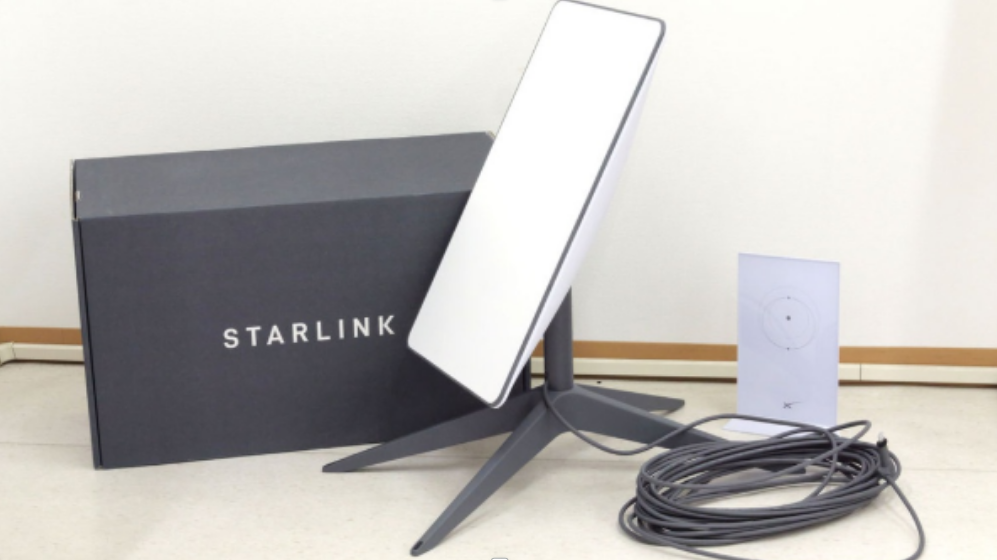Starlink Business vs Starlink Residential depends on your specific connectivity needs and environment. Starlink Business provides higher speeds, priority bandwidth, and more robust equipment designed for demanding commercial or remote operations, while Starlink Residential offers a more affordable solution suitable for typical home internet use with standard speeds and hardware. Here’s a concise comparison to help you decide:
| Feature | Starlink Business | Starlink Residential |
| Best For | Small to midsize businesses, critical sites, remote operations | Typical households |
| Download Speed | 100–350Mbps | 20–100Mbps |
| Upload Speed | 10–50Mbps | 8–25Mbps |
| Latency | 25–60ms | 25–60ms |
| Monthly Price | $140–$500 | $110 |
| Equipment Cost | $2,500 | $599 |
| Equipment | Large, high-performance dish | Standard dish |
| Installation | Self or professional | Self-installation |
| Data Prioritization | High—priority during congestion | Standard (lower priority) |
Starlink Business offers higher speeds, more robust hardware, and priority bandwidth—ideal for companies with many users, critical operations, or those located in remote areas with no traditional broadband. The business kit’s large antenna provides better satellite visibility, superior performance in harsh weather, and more stability during peak hours.
Starlink Residential is budget-friendly and sufficient for typical home use, streaming, and online work, but may experience slower speeds during congestion as business users get priority.
Starlink Mini Mounts
Secure and optimize your Starlink Mini satellite internet setup with specially designed Starlink Mini Mounts that deliver stability, versatility, and durability for a wide range of environments and uses.
Overview
Starlink Mini Mounts are engineered to provide a reliable foundation for your Starlink Mini dish, ensuring it remains firmly positioned to capture the best satellite signals. Made from robust, weather-resistant materials like marine-grade HDPE, these mounts offer excellent endurance even in harsh outdoor conditions without interfering with signal transmission thanks to their non-metallic design.
Types and Features
- Magnetic Mount Kit: Equipped with strong magnets coated with soft rubber to protect surfaces and provide over 150 lbs of holding force. Ideal for metal surfaces on vehicles, trailers, or RVs where drill-free installation is preferred.
- Suction Cup Kit: Uses industrial-grade vacuum cups for stable mounting on smooth, non-metallic surfaces such as glass or plastic. Perfect for temporary or mobile setups where repositioning is frequent.
- Pipe Adapter and Flat Mount: Designed to attach the Starlink Mini to pipes (between 31 mm and 63.5 mm diameter) or flat surfaces such as walls. These mounts allow versatile placement options outdoors or indoors, providing a sturdy, long-reaching platform for optimal dish orientation.
- Flip-Over Design: Some mounts offer reversible installation to adapt easily to metal, glass, or plastic surfaces, increasing the mounting flexibility without compromising on stability.
- Additional Accessories: Options like ergonomic bolt-on handles for portability and rack mount adapters compatible with common rack systems expand your mounting possibilities.
Benefits
- Non-metallic construction ensures zero interference with dish signal.
- Weather-resistant and suitable for both indoor and outdoor use.
- Easy installation with included hardware and clear instructions.
- Multiple mounting options cater to stationary, mobile, or portable needs.
- Durable U.S.A. manufacturing quality with marine-grade materials.
Starlink Mini Mounts are essential for anyone looking to enhance the reliability and versatility of their Starlink Mini internet setup, providing peace of mind in any location whether on the move or at a fixed site.
Starlink Roam Reviews
Starlink Roam delivers fast, reliable satellite internet designed specifically for travelers and remote users needing connectivity on the move. Across 2025 user reviews and expert evaluations, Starlink Roam is praised for its portability, ease of setup, and consistent performance in diverse environments such as RVs, boats, and off-grid locations.
Many users highlight the Roam plan’s flexibility—offering a no-commitment monthly subscription with options like a 50GB data plan at $50/month or unlimited data for heavier use. This flexibility makes it ideal for seasonal campers, digital nomads, and emergency responders who require dependable internet only when it’s needed. The Roam hardware, including the Starlink Mini dish optimized for portability, is lauded for its compactness and rugged design, enabling quick setup and teardown wherever there’s a clear view of the sky.
Performance-wise, Starlink Roam achieves speeds generally between 30 to 100 Mbps, comparable to many home broadband plans, and low latency suitable for video calls, streaming, and light gaming. However, some users note that the 50GB monthly cap on the affordable plan can be quickly consumed with streaming, so the unlimited plan might be necessary for heavier data usage.
Reviews appreciate Starlink Roam’s ease of use, particularly the simple plug-and-play setup, and durable equipment that withstands weather elements well. Downsides mentioned include the higher price point compared to traditional mobile hotspots and occasional service interruptions during severe weather. Customer support experiences are mixed but generally improve once engaged.
In summary, Starlink Roam is highly recommended for those needing portable, high-speed satellite internet with flexible plans and strong performance, especially in remote or mobile scenarios where traditional internet is unavailable.
Starlink Safety Plus
The Starlink Safety Plus package offers a suite of advanced safety and emergency features designed to keep you and your vehicle secure, providing peace of mind wherever your journeys take you. This package includes key services such as:
- Automatic Collision Notification: Instantly alerts emergency responders if your vehicle is involved in a crash, helping to get assistance quickly.
- SOS Emergency Assistance: Allows you to call for help in emergencies with the touch of a button.
- Enhanced Roadside Assistance: Provides timely help for breakdowns, flat tires, or other roadside issues.
- Vehicle Health Alerts: Monitors your vehicle’s condition and sends notifications about maintenance needs or potential mechanical problems.
- Maintenance Notifications: Keeps you informed about upcoming vehicle servicing to maintain optimal performance.
- Monthly Vehicle Health Report: Gives detailed insights into your vehicle’s overall status.
- Service Appointment Scheduling: Enables easy booking of maintenance or repair through connected dealership services.
Starlink Safety Plus is designed to offer proactive safety measures and convenience, helping you stay connected to emergency support and vehicle care. This package is often included as part of Subaru’s STARLINK connected services and may come with a trial period on new vehicles. Subscription pricing and availability vary by model and region.
For users seeking an enhanced layer of safety and vehicle monitoring beyond the standard features, Starlink Safety Plus provides an integrated, reliable solution tailored for modern connected driving experiences.
Starlink Gen 2 vs Gen 3
Starlink Gen 3 offers significant improvements over Gen 2, making it the better choice for most users seeking faster speeds, wider coverage, and enhanced connectivity.
Key differences include:
- Router Technology: Gen 3 features a Wi-Fi 6 router with tri-band radios, providing much faster wireless speeds, improved reliability, and broader coverage—up to 3,200 sq. ft.—compared to Gen 2’s Wi-Fi 5 with dual-band radios and limited coverage around 2,000 sq. ft. Gen 3 also supports more simultaneous connected devices and has two Ethernet ports versus one on Gen 2, enabling better wired connectivity.
- Dish Design and Operation: Gen 2 uses actuators (motors) to automatically orient the dish, while Gen 3 eliminates motors, requiring manual alignment via the Starlink app. The Gen 3 dish is lighter, more compact, and has a larger antenna surface for a wider field of view (about 110° vs. 100°). Removing motors reduces complexity and downtime from repositioning and power cycles.
- Performance: Gen 3 delivers up to 20% higher download speeds and nearly 5 times faster upload speeds than Gen 2. Latency is also improved by about 18%. Real-world use confirms Gen 3’s Wi-Fi 6 router provides much faster internal network speeds, benefiting streaming and file transfers.
- Durability and Efficiency: Gen 3 hardware is more rugged with a higher IP67 rating versus Gen 2’s IP56, improving weather resistance. However, Gen 3’s power consumption can be higher and 12V DC power options are more limited, making Gen 2 still attractive for RV users sensitive to power use.
- Installation & Use: Gen 3’s manual alignment takes less than 30 seconds and stays fixed, while Gen 2’s motorized dish can take longer to reposition after reset. Gen 3’s simpler, more portable design is easier to transport and handle.
In summary, Starlink Gen 3 offers faster internet speeds, improved Wi-Fi coverage, better device support, and a more durable, compact design, but at the cost of higher power needs and manual dish setup. Gen 2 remains a solid choice for power-conservative users or those preferring automatic dish orientation.



